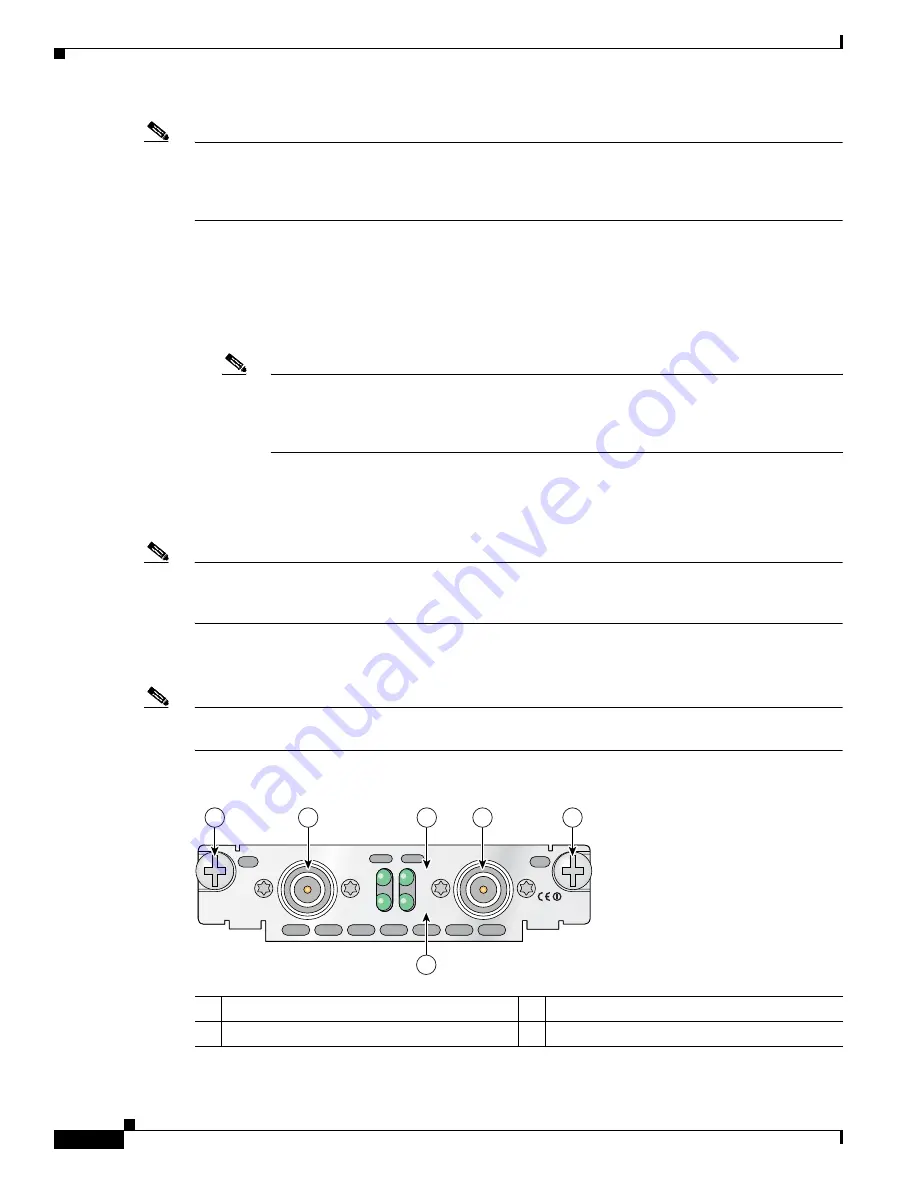
Access Point High-Speed WAN Interface Cards
Access Point High-Speed WAN Interface Cards
2
OL-12854-01
Note
The wireless operations can be configured by using the Cisco Router and Security Device Manager
(SDM) web-based application, or by using the Cisco IOS command-line interface (CLI). See the
Cisco Router and Security Device Manager (SDM) Quick Start Guide
or the
Cisco Access Router
Wireless Configuration Guide
for more information.
•
Dual-mode access point HWIC with two radios: one 2.4-GHz 802.11b/g radio and one 5-GHz
802.11a radio. (See
Figure 133
.) The following are the Cisco part numbers and the geographic
regions for which the interface cards are configured:
–
HWIC-AP-AG-A—North America
–
HWIC-AP-AG-E—Europe
Note
Access point HWICs with the 5-GHz 802.11a radio that are used in Europe may be required
to use Dynamic Frequency Selection (DFS) to detect and avoid interfering with radar signals
to comply with that regulatory domain. DFS operates only on routers running Cisco IOS
version 12.4(2)XA or higher.
–
HWIC-AP-AG-J—Japan
Both the single-mode and dual-mode access point HWICs support diversity in the radio antennas. Types
of antennas include swivel-mount dipole, wall-mount, and ceiling-mount antennas.
Note
For regulatory information about the access point HWIC and supported antennas, see the
Declarations
of Conformity and Regulatory Information for Cisco Access Products with 802.11a/b/g and 802.11b/g
Radios
document.
Figure 132
shows a single-mode access point HWIC, and
Figure 133
shows a dual-mode access point
HWIC.
Note
Although the single-mode access point HWIC has two sets of LEDs, the LEDs on the left side of the
single-mode access point HWIC are nonfunctioning and do not light.
Figure 132
Single-Mode Access Point HWIC Front Panel
1
Mounting screws
3
OK LED for the 802.11b/g radio
2
RP-TNC connectors
4
DATA LED for the radio
HWIC
AP
OK
DATA
g
RP
TNC
LEFT
RIGHT
121414
1
1
2
2
3
4
















































